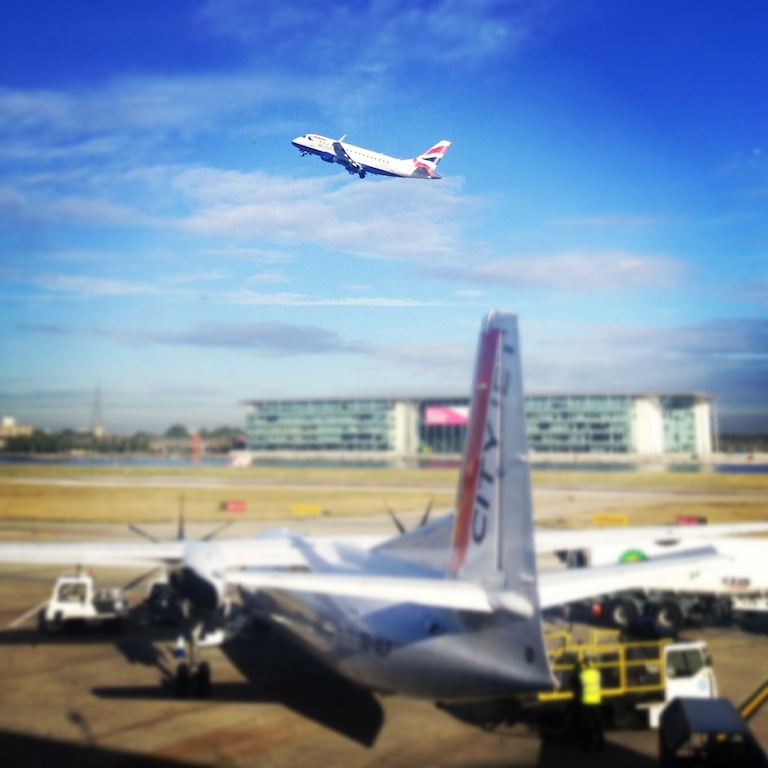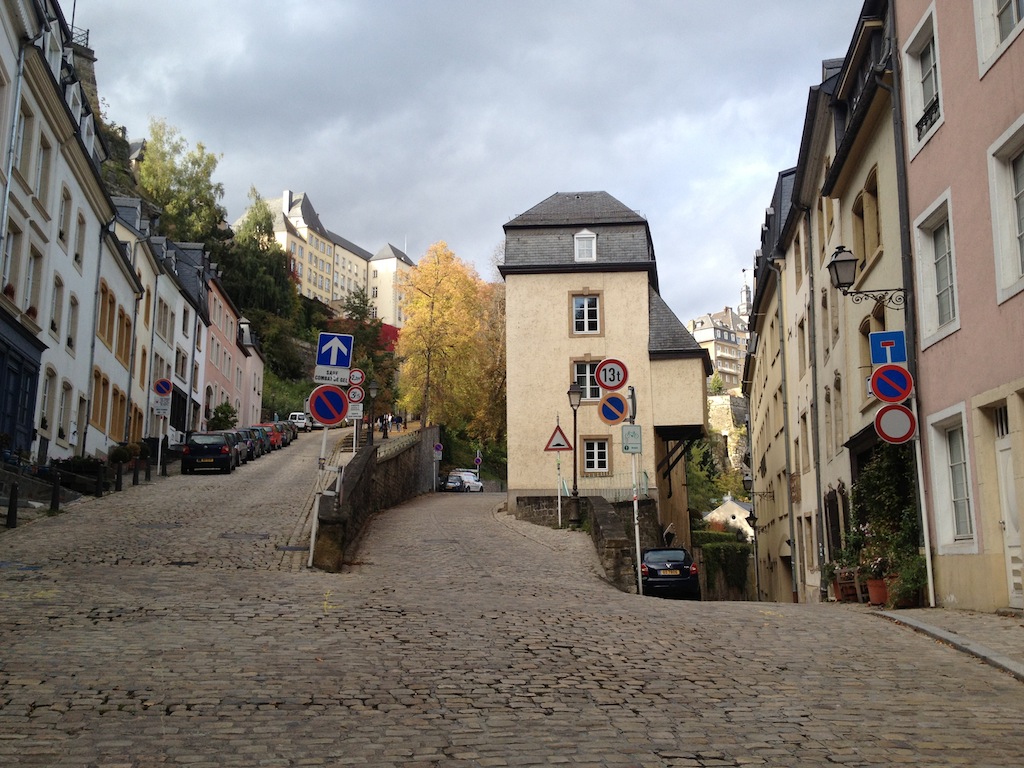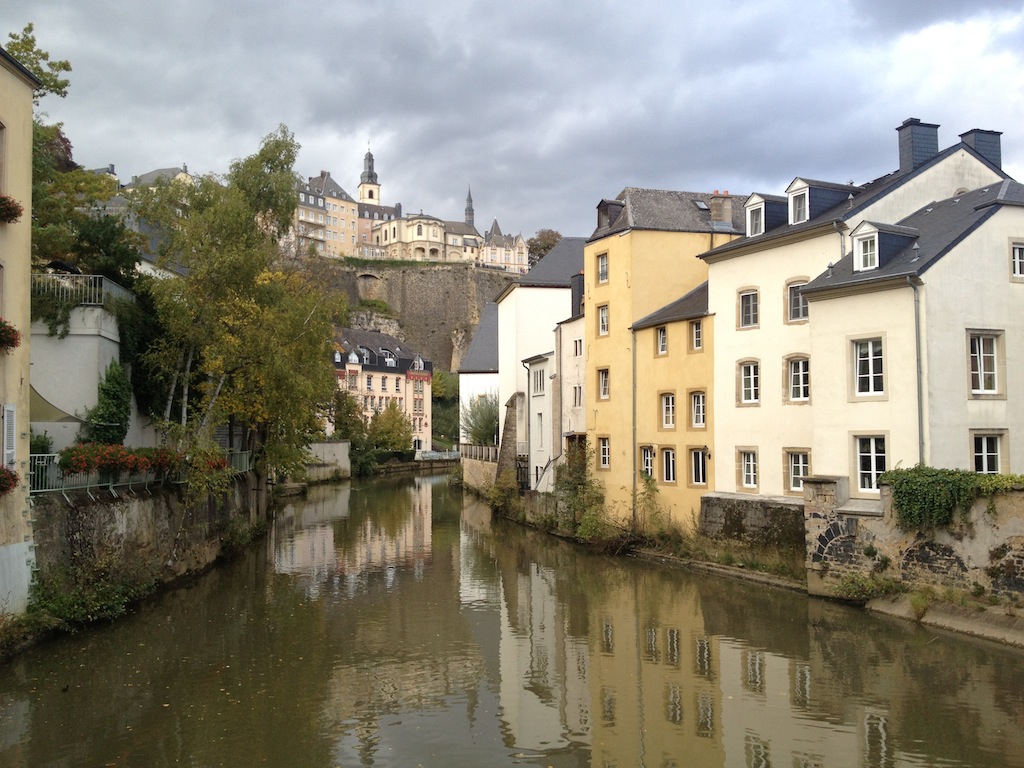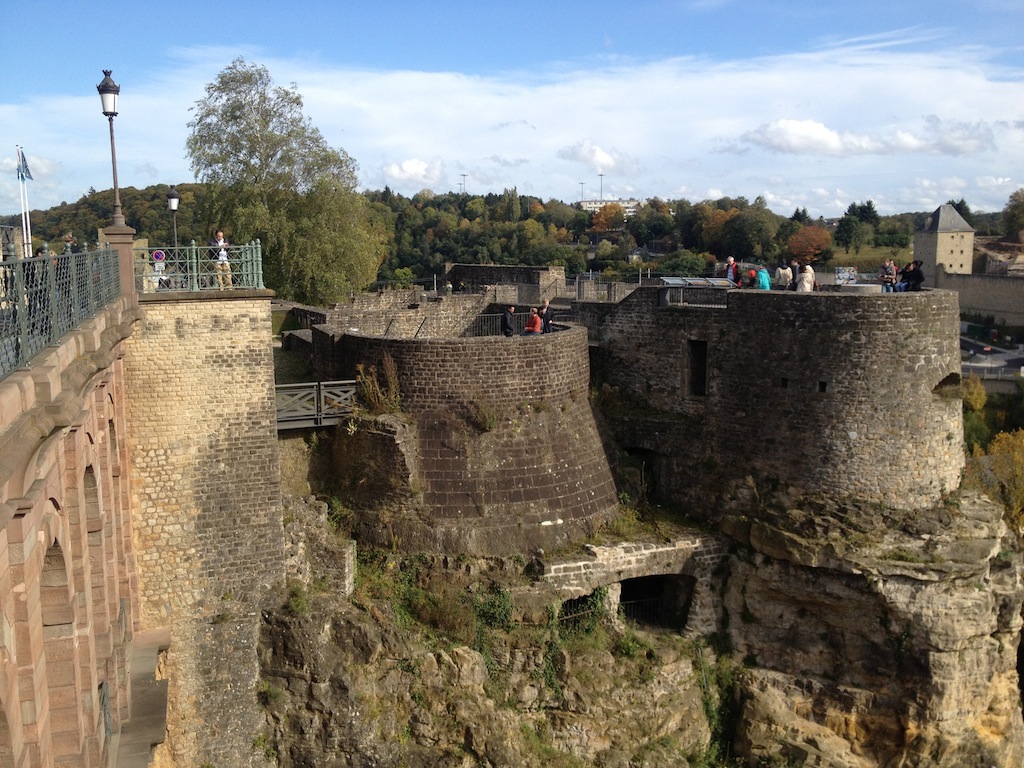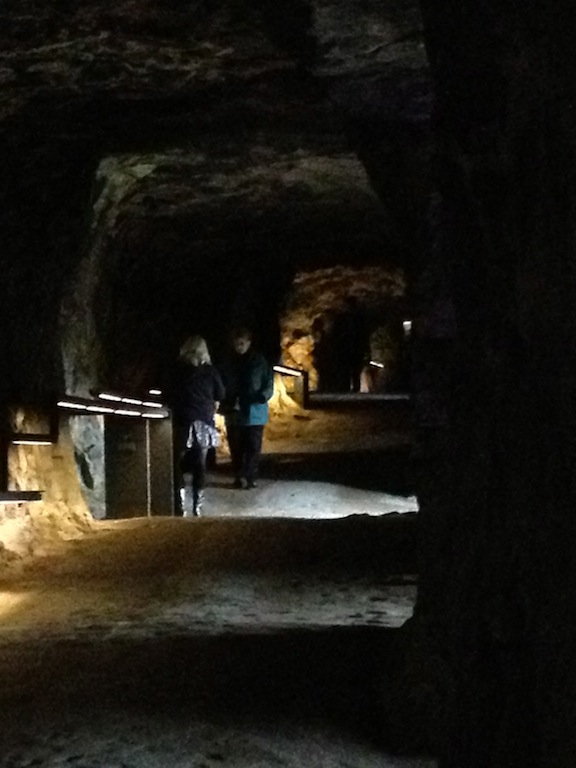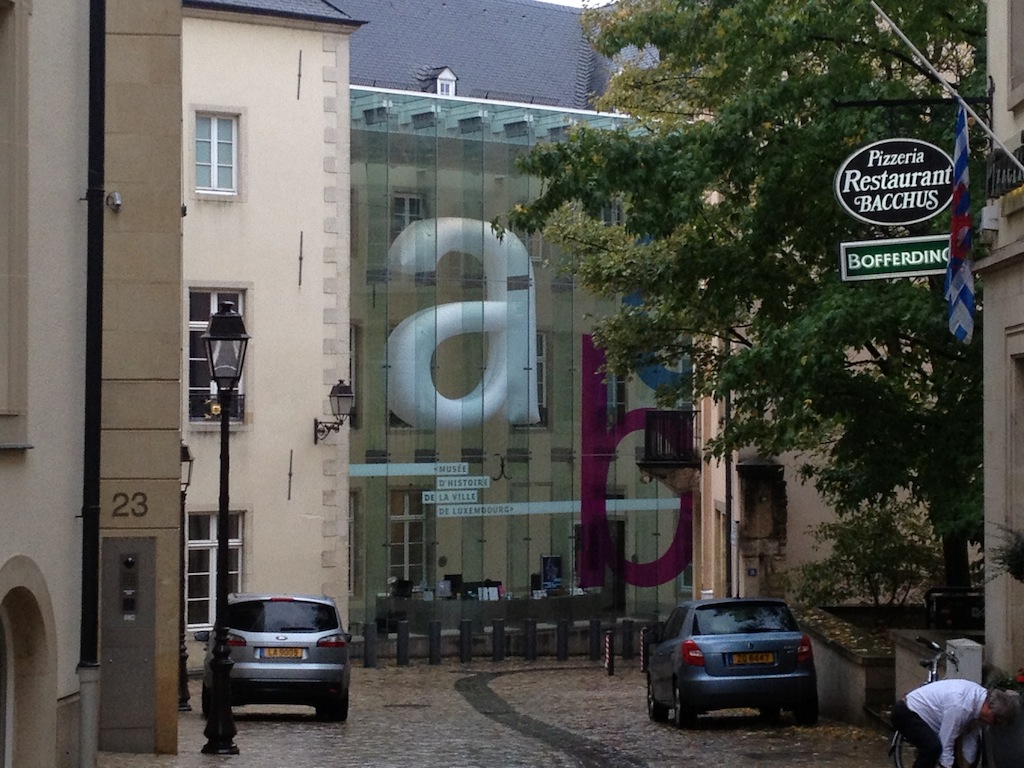I’d always wanted to check out Luxembourg. Something about the little country’s location, small size and influence from the 3 countries around it made me want to see what it was all about. When cheap Cityjet flights out of London City (LCY) airport came up not that long ago, I decided I’d treat my girlfriend and I to a city break in a destination not often travelled by most.
It all started on a clear Saturday morning. We took the fast DLR link over to the small airport in the docklands of East London and let me tell you, flying out of LCY is one of the breeziest experiences I’ve ever had in an airport. It’s a small airport, only catering for short-haul flights mostly for business people. Most aircraft are small Fokker turboprops and the largest plane you’ll find on this runway is an Airbus A319 – usually the smallest plane you’d see at airports like Heathrow or Gatwick.
Flying in a small turboprop feels more like a private jet than a regular commercial flight. The cabin is set out in a 2+2 leather upholstered seat configuration and the service from Cityjet is all about complimentary lunch, wine and chocolates. Could there be a better way to get around Europe?
Anyway, onto the destination. We landed in Luxembourg and took a quick 10 minute taxi ride to our hotel for the night, the Sofitel Grand Ducal, perched high on a hill with a commanding view over both the High and Low Cities of Luxembourg.
A Tale of Two Cities
We set out exploring the high parts of the city first, getting our bearings and finding the city’s main central squares, restaurants and shops. It was pretty much what you find in most European city centres, but leaving the well known Place d’Armes and walking in the general direction of the huge valley that the high town overlooks, we found the Low City. Navigating the multi level maze of ramparts, zig-zagging through parks and down stairways, we were met with the lane ways and cobbled streets of the more secluded and quieter Low City of Luxembourg.
The first thing I discovered was this unique intersection of three different streets diverging off into different levels of the town. It was a highlight for me and really showed how special this city – almost nothing is built on flat ground. I’d never seen anything like it.
Venturing further deep into the low city, we found the river that winds its way through the valley that gives Luxembourg its unique topography. The river is lined with quaint medieval buildings of many different shades and hues, shadowed by cliffs that lead up to the high city and Luxembourg’s famous casemates.
Exploring the Casemates
After a brilliant evening in the hotel, which featured a solid serving of steak for dinner and a lavish morning spread for breakfast, we took on Luxembourg’s famous casemates. The casemates are a series of tunnels carved out of the rock that the city stands on that stretch hundreds of metres in all directions. They were built over about 500 years by the many different nations that occupied the city over the centuries. They all saw Luxembourg as strategically valuable within Europe and built defences to ensure it was always secure from invaders.
There are two casemates in the city – the Bock and Petrusse casemates, each of which covers a different part of the city. We explored the Bock casemates, which are easily accessed from a viaduct that juts out from the high city and are mostly of Spanish origin. They include massive turrets, long underground halls and numerous defensive positions that ensured the continued safety of Luxembourg during times of peril in Europe.
A lot of cannons from the era remain, providing a stark reminder of what these fortifications were for and how many men must have been down here in times of crisis. The Bock casemates alone could accommodate up to 10,000 men when the city needed to be evacuated and defended and included everything required to support that number of people over a few days.
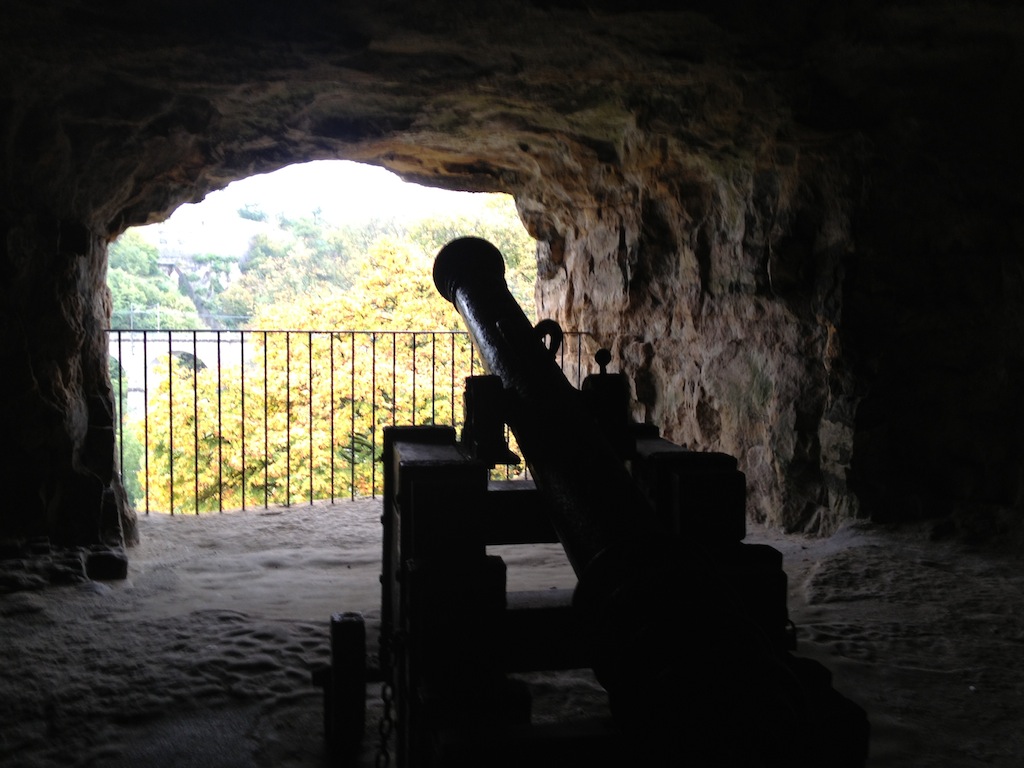
Shortly after we exited the casemates, the rain started to fall and the City Museum provided a well needed refuge from the weather. In here we learned of the hundreds of years of history of the medieval city and its numerous different occupiers that shaped the country’s culture. The city’s people, economy and society are also very well illustrated along with the story of how Luxembourg became an important business centre of Europe in recent decades.
As Sunday afternoon approached, we went in search of somewhere for lunch but found many places open in short supply. It seems Luxembourg is a city that takes the ” no trading on Sundays” rule literally, with barely anywhere open at all. A trendy student cafe we had our eye on from Saturday was deserted, and the shady, smoky pubs near the train station didn’t take our fancy, so we unfortunately went hungry. Even the selection of places to eat in the airport was dire, with nothing more than a single bar after security in the entire terminal. Bit of a let down.
But all-in-all, Luxembourg was an intriguing city to explore in a short overnight jaunt. It’s a city that stands on its own in terms of history and geographical uniqueness, with influences from Germany, France and Belgium all shaping the country’s identity. And being less than an hour’s flight from London makes it a great place to visit on a short trip if even for a single night.
